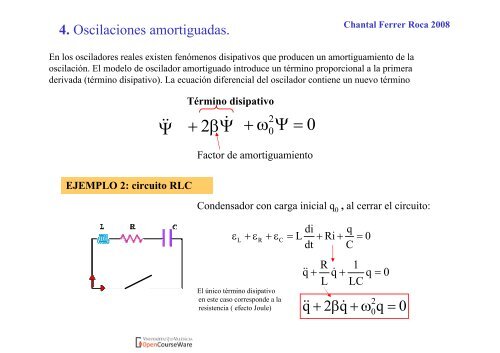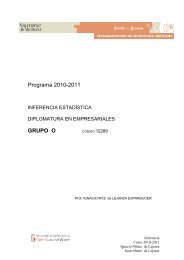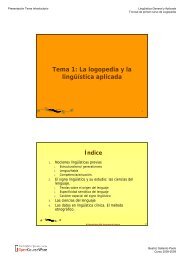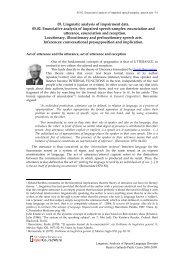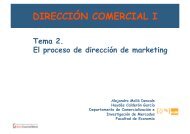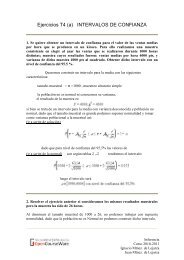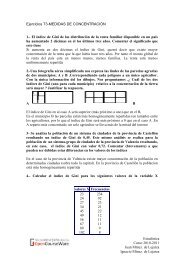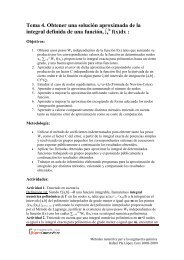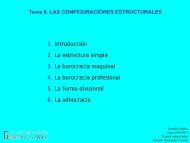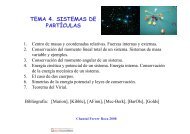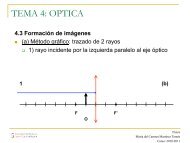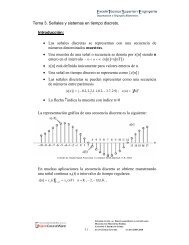TEMA 3. OSCILACIONES SIMPLES
TEMA 3. OSCILACIONES SIMPLES
TEMA 3. OSCILACIONES SIMPLES
You also want an ePaper? Increase the reach of your titles
YUMPU automatically turns print PDFs into web optimized ePapers that Google loves.
4. Oscilaciones amortiguadas.<br />
<br />
EJEMPLO 2: circuito RLC<br />
<br />
Término disipativo<br />
Ψ& 2<br />
& + 2βΨ&<br />
+ ω0<br />
Ψ = 0<br />
Condensador con carga inicial q 0 , al cerrar el circuito:<br />
ε<br />
L<br />
+ ε<br />
R<br />
+ ε<br />
C<br />
=<br />
di<br />
L<br />
dt<br />
+ Ri +<br />
Chantal Ferrer Roca 2008<br />
En los osciladores reales existen fenómenos disipativos que producen un amortiguamiento de la<br />
oscilación. El modelo de oscilador amortiguado introduce un término proporcional a la primera<br />
derivada (término disipativo). La ecuación diferencial del oscilador contiene un nuevo término<br />
Factor de amortiguamiento<br />
El único término disipativo<br />
en este caso corresponde a la<br />
resistencia ( efecto Joule)<br />
q<br />
C<br />
= 0<br />
R 1<br />
&q<br />
& + q&<br />
+ q = 0<br />
L LC<br />
2 &q<br />
& + 2βq&<br />
+ ω0<br />
q = 0


